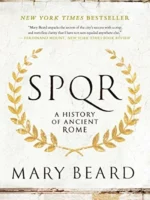Guns, Germs, and Steel, Jared Diamond, 1997
- Author: Jared Diamond
- Genre: History
- Publisher: Simon & Schuster
- Publication Year: 1997
- Pages: 480
- Format: Paperback
- Language: English
- ISBN: 978-0393354320
- Rating: 4,4 ★★★★★
Guns, Germs, and Steel Review
Guns, Germs, and Steel by Jared Diamond is a sweeping explanation of why societies developed at different speeds. Published in 1997, it argues that geography and biology set the table long before culture took a seat. For you, this book offers a way to think about history without resorting to myths of superiority. It is big picture, evidence driven, and built to provoke useful questions.
Overview
Diamond traces how access to domesticable plants and animals shaped food surpluses, population growth, and technology. You will see how Eurasia’s east west axis eased the spread of crops and ideas, while other regions faced harder conditions. The title points to tools of dominance: weapons, microbes, and metallurgy that arrived from ecological luck as much as genius.
Summary
The narrative begins with a New Guinea question about why some people have so much cargo. From there it walks through agriculture, writing, state formation, and disease. Epidemics carried by Old World populations decimated the New World, not by design but by long coevolution. The book closes by reframing inequality as history’s geography, not destiny of intellect. The argument is ambitious and clear even when you disagree with parts of it.
Author
Jared Diamond writes as a scientist telling a detective story. His style is patient, comparative, and open about uncertainty. You benefit from maps, case studies, and a steady refusal to mistake correlation for moral worth.
Key Themes
You will explore environment as engine. You will see agriculture as accelerator. You will consider disease as historical force. You will meet technology as outcome, not origin. You will notice how chance and place ripple across centuries.
Strengths and Weaknesses
Strengths: broad synthesis, clear prose, and a humane intent to counter racist narratives. Weaknesses: cultural nuance can flatten at this scale, and critics argue it underplays agency. Overall: a powerful lens even when it is not the only one.
Target Audience
Ideal for readers who like cross disciplinary history, big frameworks, and debates grounded in data. Useful for students and general audiences alike.
Favorite Quotes
Short lines resonate: geography matters, crops travel, germs conquer. They help you hold the structure in mind.
Takeaways
For you, the key takeaway is humility: outcomes often reflect environment more than virtue. That insight changes how you read past and present.
| pa_author | Jared Diamond |
|---|---|
| ISBN | 978-7-776-82362-7 |
| pa_year | 2003 |
| Pages | 431 |
| Language | English |






